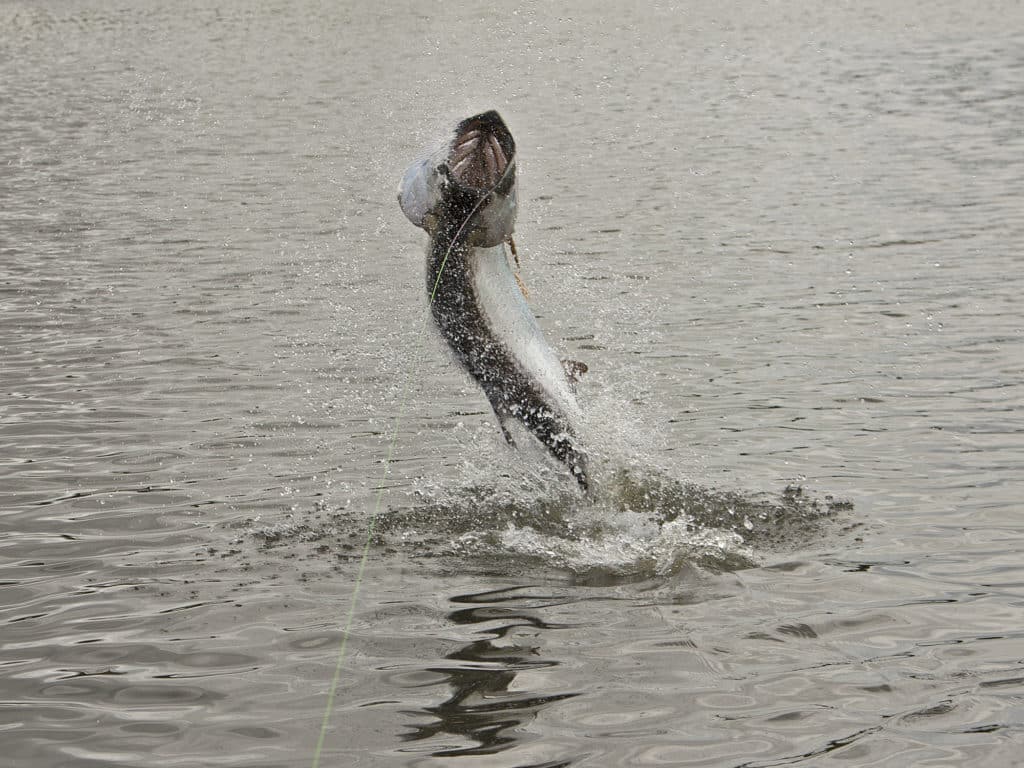
When it comes to inshore game fish, we all have our regional favorites, but there are some target species extraordinary enough to make most anglers’ bucket list. Some make the cut because of their beauty, but most earn a spot on our dream team of inshore game by the degree of difficulty their fighting prowess presents. That is the case with the ten fish listed here, in no particular order.
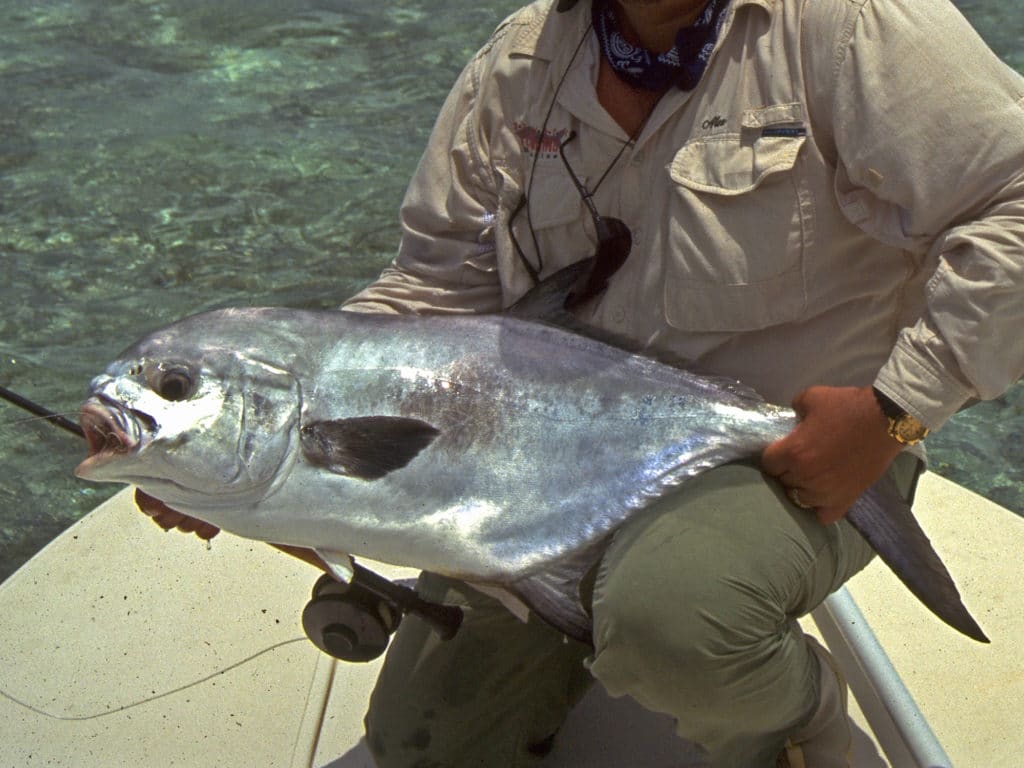
PERMIT
Seeing the tall, black dorsal and sickle tail of a permit breaking the surface of a shallow flat revs up the motor of novice and veteran anglers alike. And while their wariness is legendary, it doesn’t take a back seat to the fish’s fighting skills, which include underhanded moves like rubbing their lips against the bottom to chafe off your leader, zigzagging across areas laden with sea fans, coral and floating grass to sever your fishing line, and swimming on their side to get past the skinniest of water on their way to the nearest escape route. As if all that wasn’t enough, the oversize, forked tail and muscular build enables permit to propel at high speeds, and something in their genes tells the fish when to turn broadsided and take full advantage of their wide bodies to exert maximum resistance against the angler’s pull.
Two primary species are recognized, the Indo-Pacific and the more popular and widespread permit that occurs in the western Atlantic Ocean, from Massachusetts to Brazil, including the Gulf of Mexico and the West Indies, with the greatest concentrations in Belize, Mexico’s Yucatan Peninsula and South Florida. They spawn in deeper water, congregating during spring around wrecks and reefs, where they frequently take on the more aggressive personality of jack crevalle, which makes them easier to catch. But permit feed mostly along the surf, in shallow patch reefs and on the flats, where they are at their wariest, make the most of their physical gifts and pull every trick in their bag to avoid capture. It is that high degree of difficulty that makes landing a permit on the flats the quintessential feather in an angler’s cap. The current IGFA All-tackle World Record, by the way, is exactly 60 pounds.
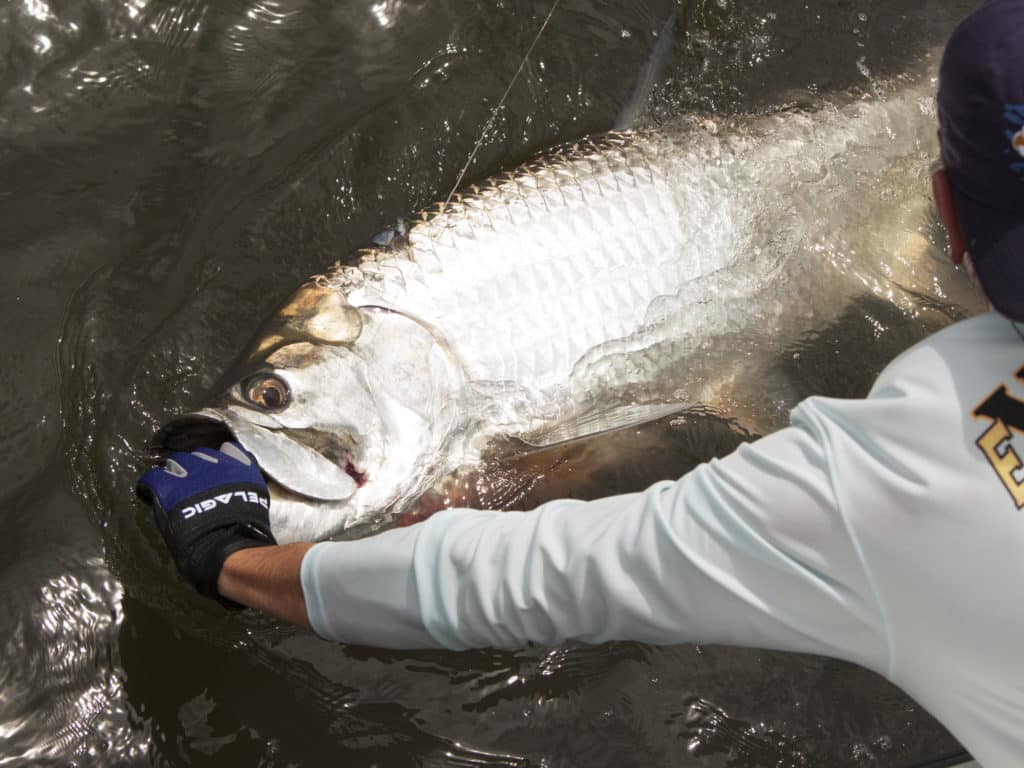
TARPON
If you count yourself among the fortunate who have tangled with tarpon, you understand why Megalops atlanticus is considered one of the world’s most exciting and challenging game species. If you haven’t had the pleasure, you’ll need to imagine a fish blessed with the power and stamina of a marlin, the propensity for wild aerial acrobatics of a sailfish, the discerning eyesight of a permit, a rock-hard mouth with very little soft tissue for even the sharpest of hooks to penetrate, and lips as rough as rasps that can easily chafe through a leader.
Add to the equation the facts that tarpon may surpass 200 pounds in weight (the IGFA All-tackle World Record is 286 pounds) and live upwards of 50 years, plenty of time to learn to avoid anglers treachery and perfect a few dirty tricks of their own, and you begin to get the picture. If you’re still not sure tarpon is the perfect inshore predator, consider also that its anatomy has undergone minimal changes in tens of million of years, that it can easily adapt to a freshwater environment when needed, and that a special air bladder enables tarpon to gulp air and thrive in waters with little oxygen content. And did we mention tarpon often travel in schools and frequent shallow water, presenting great sight-casting opportunities? Or that they’re opportunistic feeders that eat a wide range of natural baits and are known to strike artificials and even flies?
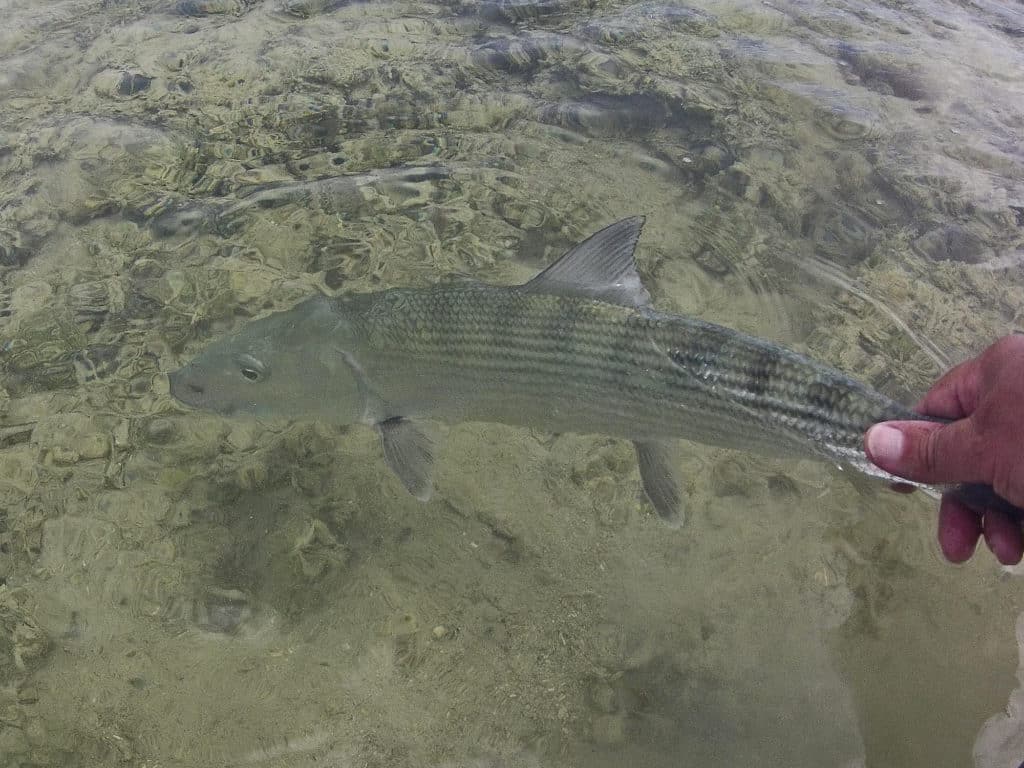
BONEFISH
Five bonefish species are recognized, but only three are known to reach double-digit weights: the Roundjaw and Sharpjaw (both frequently labeled simply as Indo-Pacific bonefish), which occur in Hawaii, Australia, Seychelle Islands and other warm regions of the Pacific and Indian oceans; and Albula vulpes, the vastly more popular species that inhabits the western Atlantic and the Caribbean.
Bonefish use their inferior mouth and conical nose to root up prey, and granular teeth in the tongue, upper jaw and throat to grind mollusks and crustaceans. However, the fish’s diet also includes invertebrates and small finfish, and bones adjust their foraging tactics accordingly. Still, bones spend more time sifting for morsels in grass, sand or mud flats, often shallow enough for their tail and dorsal to protrude above the surface. Stealth and accurate casting are rewarded with blazing runs (they’re known to reach 30 mph) that multiply in length and number according to the specimen’s size, which can be substantial in parts of the Bahamas and in South Florida, where the current IGFA All-tackle World Record was set at 16 pounds even.
The silvery scales on a bonefish’s sides reflect the bottom, while its backs takes on the coloration of the surroundings, even developing darker stripes to blend with the sea grass. This camouflage enables the fish to remain undetected, hence the nickname “gray ghosts of the flats.”
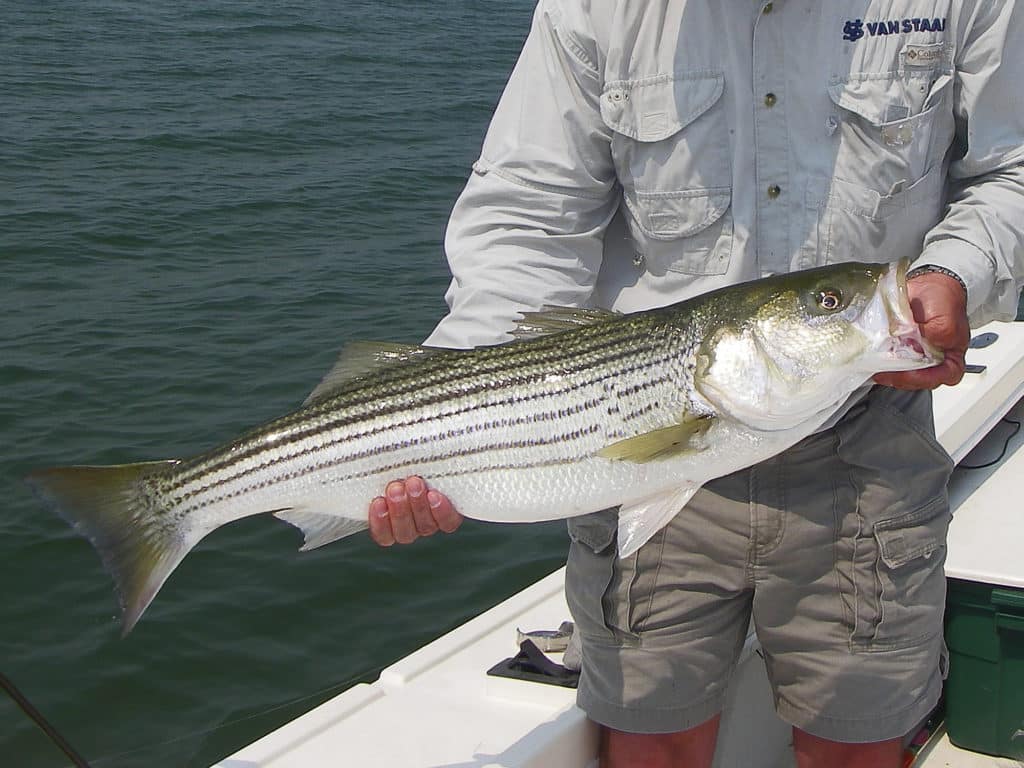
STRIPED BASS
More commonly known as stripers (or rockfish in parts of the Mid-Atlantic coast), striped bass are a long-lived native species (up to 30 years of age) of North America’s Atlantic coast, ranging from the St. Lawrence River to the St. John’s River in Florida and into the Gulf of Mexico to approximately Louisiana. Transplanted stocks have taken hold in California, but stripers are most abundant in coastal waters and estuaries in the northeastern states of Maine, Massachusetts, Rhode Island, Connecticut, New York, New Jersey, Delaware and Maryland, and somewhat less so in Virginia and North Carolina.
Important wintering grounds are located from Cape Henry, Virginia, south to Cape Hatteras, North Carolina, but the majority of the coastal migratory stock (70 to 90 percent) originates in the Chesapeake Bay spawning areas, with significant contributions from the spawning grounds of the Hudson and Delaware Rivers. With warming water temperatures in the spring, the mature adults migrate to riverine spawning areas to complete their life cycle, typically spawning from April to June.
Stripers delight anglers with their aggressive nature, fighting spirit, and their willingness to take spoons, jigs, swim baits, swimming plugs, poppers and flies. Of course, they also fall for a variety of live baits like menhaden (aka bunker), eels, herring, sand eels and mackerel, as well as bait chunks, clams, sandworms and bloodworms.
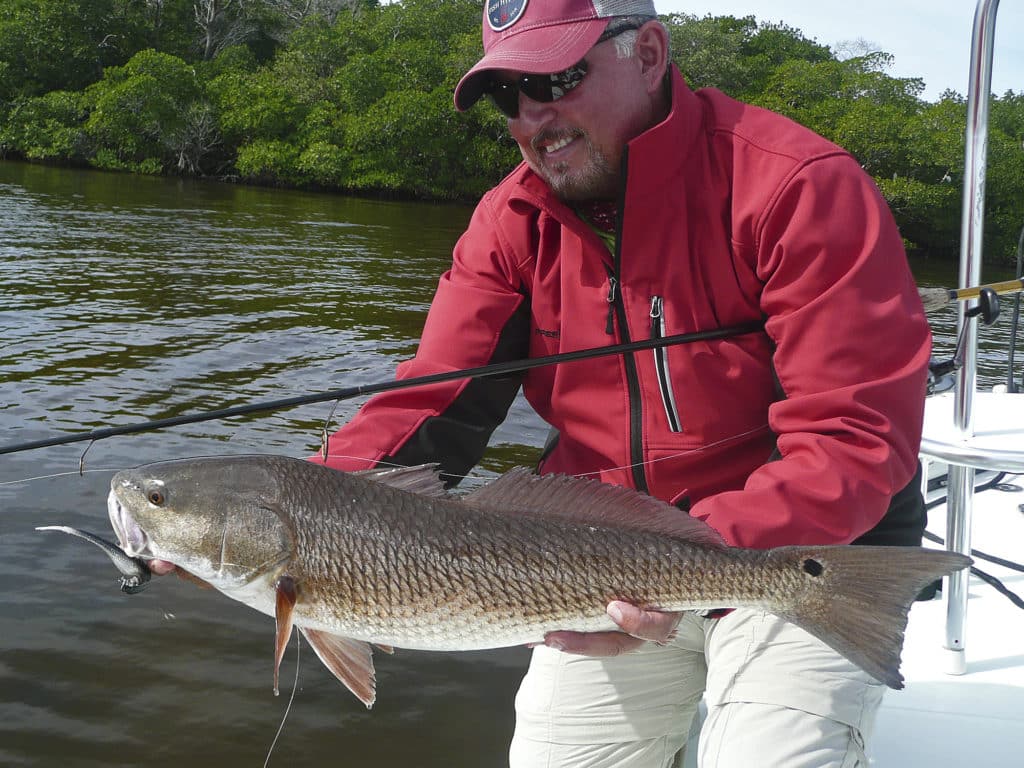
REDFISH
Also called red drum or channel bass, redfish is most easily distinguished by one or more black dots on both sides of their tail. A native of the Gulf of Mexico, from Florida to northeastern Mexico, and the Atlantic coast of the U.S., as far north as Delaware, redfish spend most of their lives in bays, inlets and passes, coastal rivers, shallows flats and marshes, but larger, sexually mature specimens (known as bull reds) head offshore in schools to spawn.
Though cautious in areas with heavy fishing pressure or boat traffic, reds are opportunistic feeders that search out prey aggressively. The inferior position of their mouth is better suited for foraging on or near the bottom, which causes them to break the surface with their tails in shallow water. But while crabs and shrimp make up a large portion of their diet, so do baitfish like mullet, menhaden, herring, sardines, pilchards, pinfish, pigfish and others.
Bottomfishing with chunks of blue crabs, ladyfish and oily baitfish, suspending live shrimp or crabs under a popping cork, free-lining baitfish near bottom structure, and blind- or sight-casting a range of lures (from jig heads paired with soft plastics to weedless spoons, spinnerbaits, and suspending, shallow-diving and topwater plugs) and flies, take their share of reds in the right circumstances. The IGFA All-tackle World Record is 94 pounds, 2 ounces.
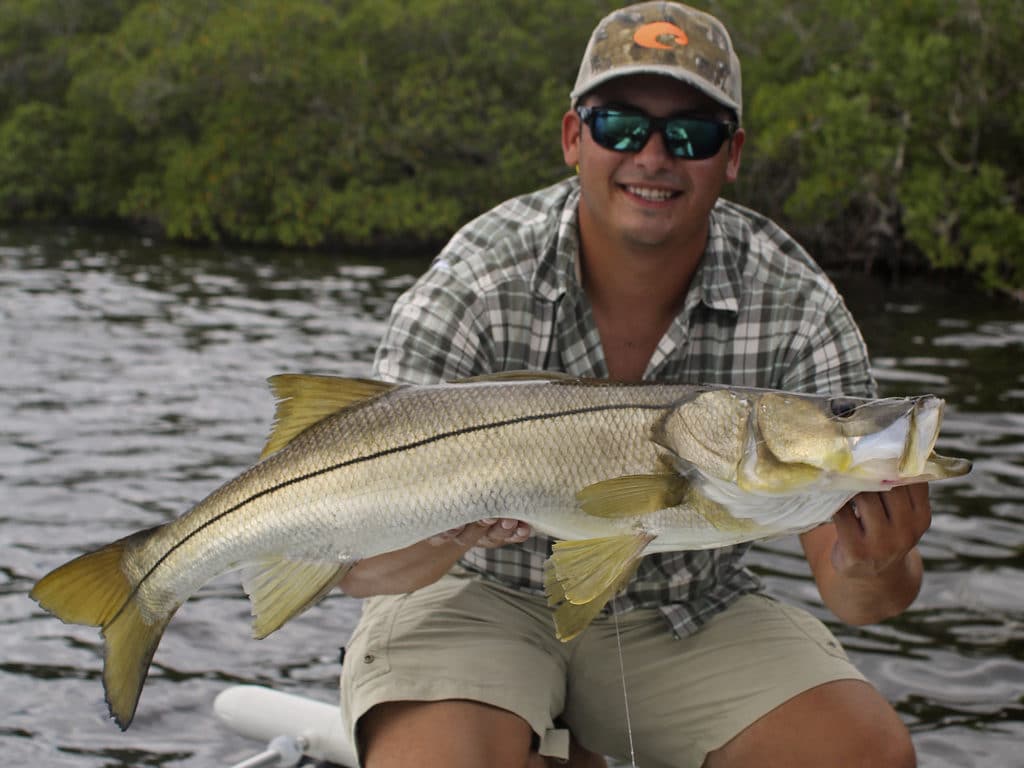
SNOOK
A total of 8 snook species are recognized, but only 4 — the Pacific Black Snook, Pacific White Snook, the Mexican Snook and the Common Snook — are known to exceed 20 pounds in weight. The latter is the most popular and widespread, ranging from North Carolina to Northern Brazil, with pockets of fish residing in southeast Texas and various Caribbean islands, and the largest populations established along both Florida coasts, Mexico’s Yucatan, and a number of estuaries throughout the Atlantic coast of Central America.
Notorious for its wariness, snook are partial to both natural and man-made structures, from sunken stumps and mangrove roots to rock jetties, dock pilings and bridge abutments, which provide not only cover, but also create eddies where they can wait in ambush for shrimp, crabs, or baitfish like mullet, sardines, herring, pilchards, pinfish, grunts, anchovies and needlefish to happen by without constantly fighting the brunt of the current.
Displaying astonishing power for their size, snook have a knack for breaking off on submerged obstructions, which makes stopping hooked fish immediately a must. Smaller specimens include jumps in their repertoire of fighting moves, while those over 12 pounds resort to violent head shakes and thrashing to rid themselves of the hook.
Proven tactics for snook include live-baiting, trolling swimming plugs along inlets and passes, canals and deep shorelines, and casting jigs, plugs, soft plastics or flies along beaches and around structures located near moving water. The current IGFA All-tackle World Record is 53 pounds, 10 ounces.
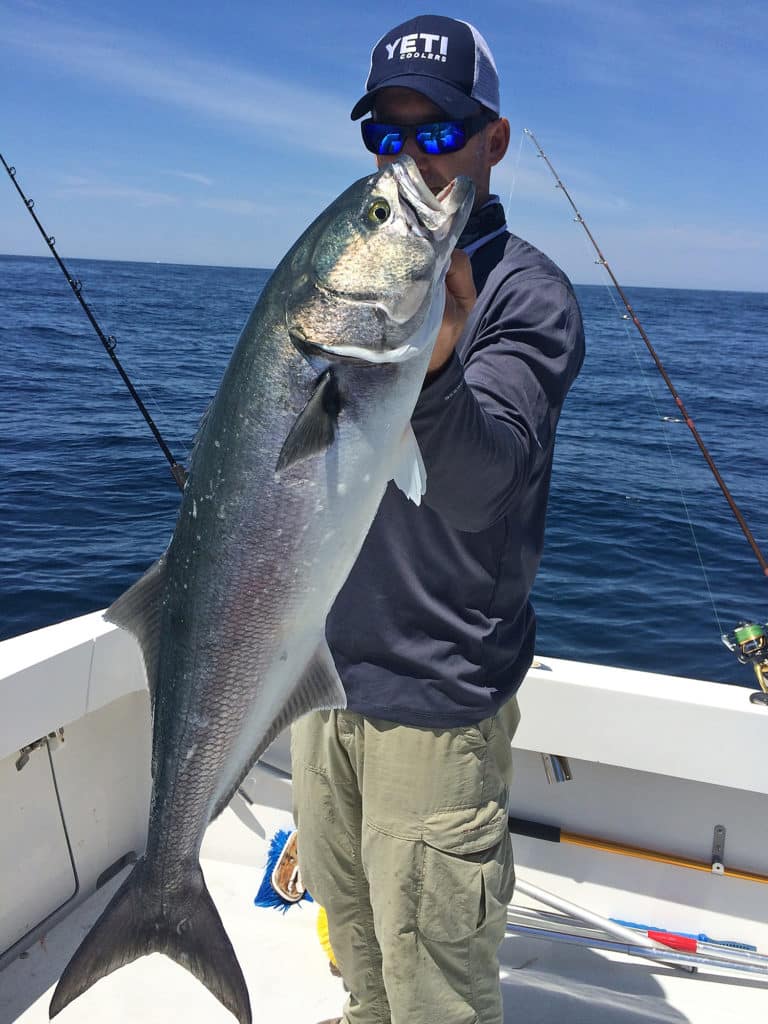
BLUEFISH
A true globetrotter, bluefish is a fast-moving coastal species present in temperate to tropical ocean waters worldwide, except in the eastern Pacific. Blues travel and hunt in schools — often consisting of hundreds of members — along the coast, taking up temporary residence around wrecks, and frequently invading bays and the Intracoastal, even going up coastal rivers, in search of prey.
Their powerful jaws and sharp, serrated teeth serve them well during the ferocious attacks they launch on schooling baitfish of most any kind. So ravenous are their feeding habits that only the fact that blues travel in like-size groups curtails cannibalism, which still takes place when the larger “chopper” blues come across smaller specimens of their same species (often called snapper blues).
A variety of natural baits, both live or dead (specially menhaden, herring, pilchards and other oily baitfish species) work well, and so do a number of lures, including spoons, irons, jigs, subsurface and topwater plugs, and soft-plastics, thought the latter rarely survive more than a single bluefish strike intact. Anglers efforts are usually rewarded with strong runs and wild jumps. In the U.S., Northeast and mid-Atlantic waters yield trophies exceeding 20 pounds with some frequency. In fact, the IGFA All-tackle World Record, a whopping 31-pound, 12-ounce fish, came from Hatteras, North Carolina.
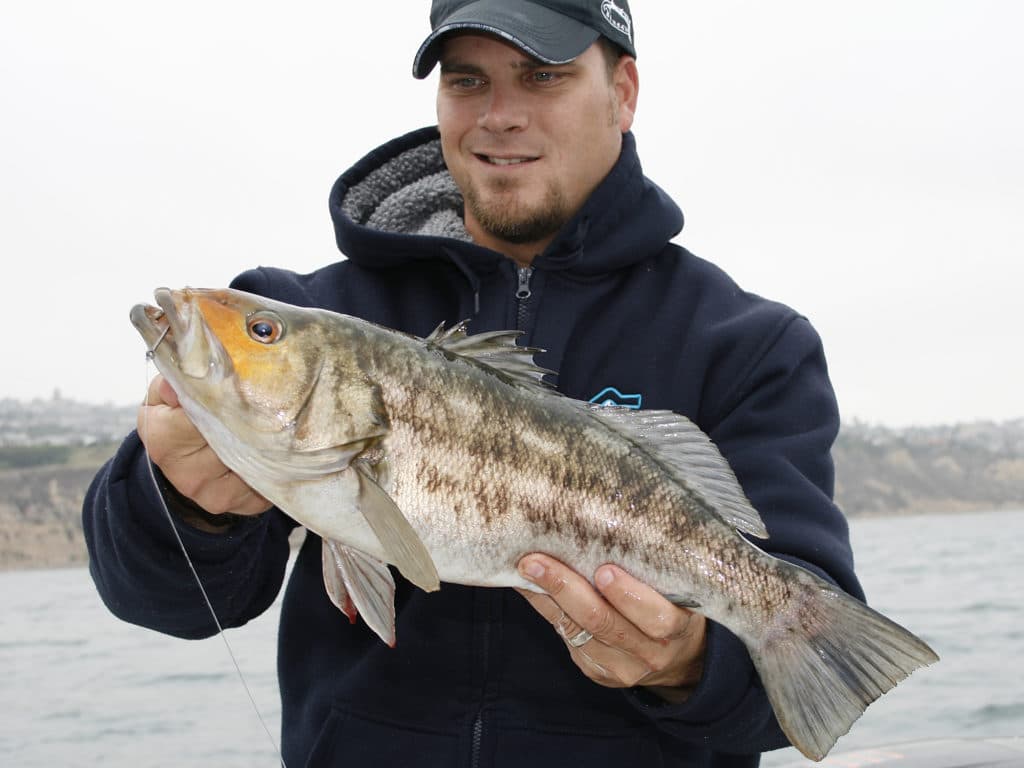
KELP BASS
Also known as Calico bass, kelp bass is a resident of North America’s Pacific coast California and northeastern Baja Peninsula that ranges from the Columbia River, Washington, to Magdalena Bay, Baja California. It is usually found in or near kelp beds, around rock jetties and breakwaters, and over reefs or sunken structures, mostly in shallow water, but sometimes as deep as 150 feet.
This tough and vigorous fighter is an omnivorous feeder that will take most of the local live baits, as well as a variety of lures, especially metal jigs, weighted swim baits, and other soft plastics. The best fishing usually takes place during summer and fall, although kelp bass are available year round in some areas.
And since kelp bass don’t migrate and they tend to be territorial, that makes them susceptible to persistent presentations. The larger specimens often come from deeper lairs. The current IGFA All-tackle World Record of 14 pounds, 7 ounces was set in Newport Beach, California, back in 1993.
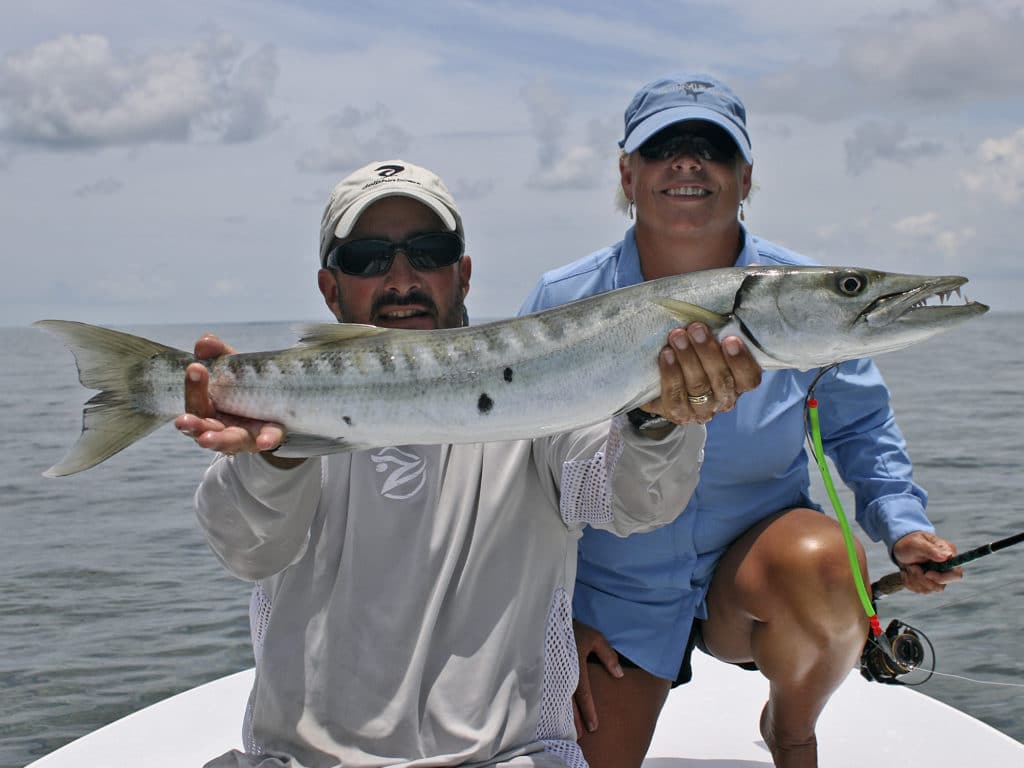
BARRACUDA
There are 9 species of barracuda recognized, the Guinean, which reaches weights of 100 pounds, is the largest, followed by the Great Barracuda, known to exceed 80 pounds — the IGFA All-tackle World Record is 87 pounds, 3 ounces. The latter is the most widespread, occurring in all tropical seas, except the eastern Pacific, and found offshore, around wrecks, reefs and underwater pinnacles, and inshore, around piers, bridges, sand and grass flats, and wherever smaller fish congregate.
Barracudas possess strong, fang-like teeth, unequal in size and set in sockets in the jaws and the roof of the mouth. These fierce predators rely on surprise and short bursts of speed (up to 27 mph) to overrun their prey, and their diet consists almost completely of fish, and occasionally shrimp and squid. When gorged, larger barracudas are known to herd prey, from baitfish to bonefish, in shallow water, guarding over them until time comes to feed again.
Small to medium size barracudas sometimes gather in schools, but the large ones are mostly loners. In the shallows, they respond to live needlefish, houndfish, pinfish and various other small fish, as well as tube lures and shiny spoons, jigs and plugs retrieved fast enough to occasionally skip on the surface. In deeper water, most fall for fast-trolled lures and baits, as well as free-lined blue runners, small jacks, bluefish, mackerel, bonito and other frisky baitfish.
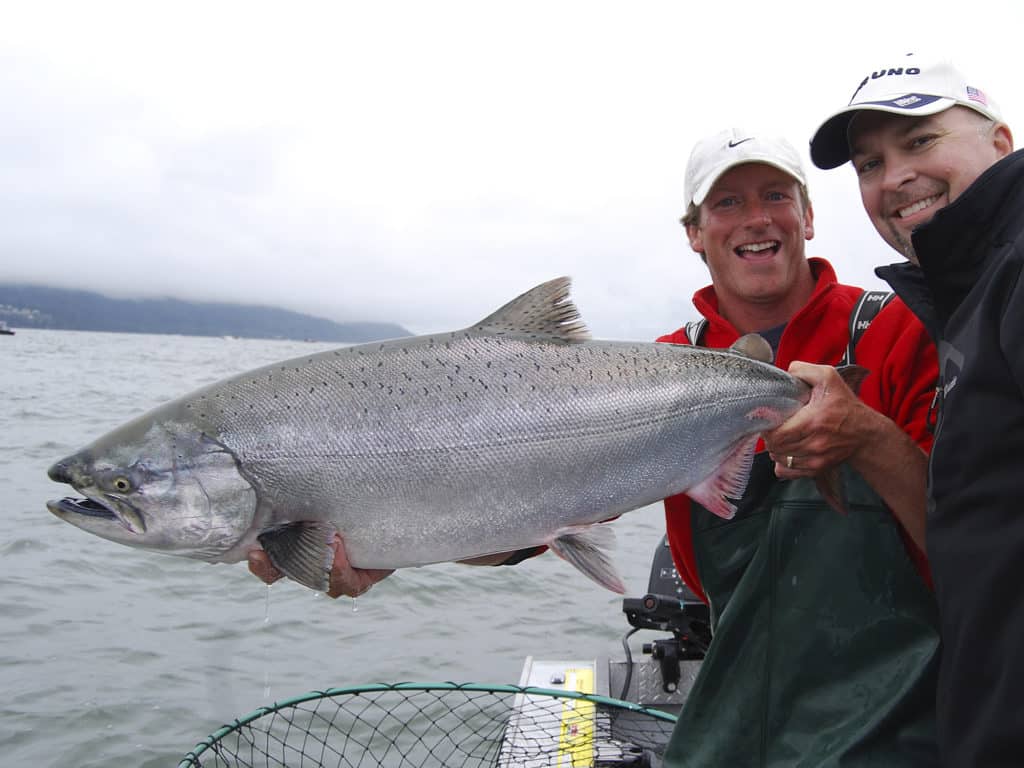
KING SALMON
The largest of the five Pacific salmon species, king salmon, also known as chinook, is a native inhabitant of the northwestern Pacific — from the Ventura River, California to Point Hope, Alaska, plus the Bering Sea, the Okhotsk Sea, the Sea of Japan, and the Arctic Ocean.
Chinooks travel and forage in schools of like-size members and tend to relate to offshore reefs and feed on the leeside of underwater drop-offs, pinnacles and ridges of the Continental Shelf, primarily on herring, sea lance and other schooling baitfish, which are easily imitated by a variety of lures and flies.
These fish are anadromous and spend one to eight years in the ocean (the average is three to four years) before returning to the river where they were born to spawn. During their time in ocean waters, their back and top of the head is blue-green or purplish, the sides are silvery, and black spots are sprinkled on the tail and the upper half of the body. But once these fish enter freshwater, they undergo radical morphological changes — including much darker coloration — in preparation for spawning. The IGFA All-tackle World Record is 97 pounds, 4 ounces.









